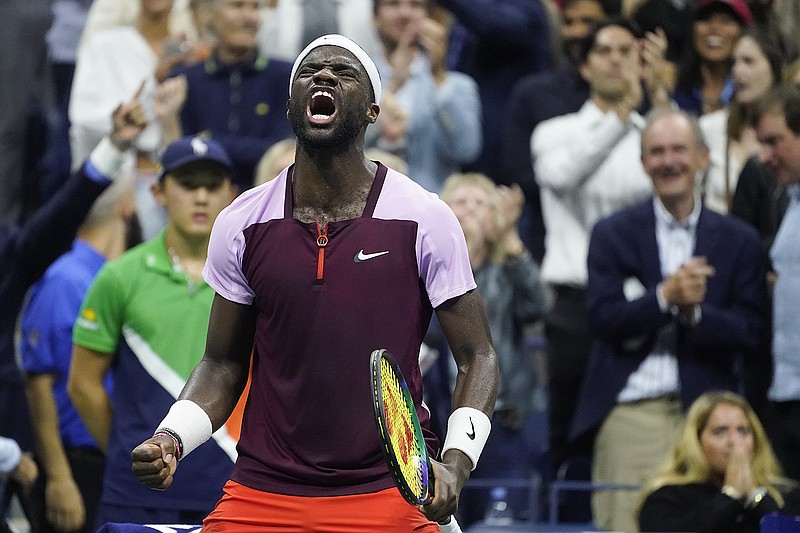A Black girl beginning her senior year at predominantly white Girls Preparatory School, Santana Etchison and her mom watched what figures to be Serena Williams' final professional tennis match ever with both excitement and sadness during what became her third-round U.S. Open loss earlier this month.
"We were hoping she would go out with a bang," Etchison said. "All of our emotions were tied together, the highs and the lows. We were really emotional when she lost."
At that moment, the final Grand Slam tourney of the year figured to be all but devoid of emotion or surprise from that point forward. Without Serena, an Eastern European figured to win the women's side, which Poland's Iga Swiatek did. On the men's side, the ageless Spanish wonder Rafa Nadal -- the most decorated men's player ever with 22 Slams on his resume -- was at least as likely to win the Open as then-No. 1 and defending champ Daniil Medvedev. And if not them, quite possibly the crazy Aussie Nick Kyrgios, who lost to Novak Djokovic in the Wimbledon final, or the 19-year-old phenom Carlos Alcaraz.
(A single note about Djokovic, who sat out the U.S. Open rather than be vaccinated against COVID-19. ESPN wrote that he involuntarily missed the Open. Not true. He voluntarily chose not to get vaccinated, so he voluntarily missed the Open. His choice. Respect his decision. But there was nothing involuntary about it.)
Now, where were we?
Oh, yeah, back to a few days after Williams lost and another night match was gripping Arthur Ashe Stadium as the 24-year-old Black American Frances Tiafoe was locked in a high-octane match against the Russian Andrey Rublev, the winner advancing to a semifinal date with Alcaraz.
The crowd was almost, or at least in the same time zone, as the crowd had been for Serena a few nights earlier. And it worked. He won with booming serves and laser forehands and backhands, a performance worthy of a budding star so needed in the American professional tennis community.
It was all enough to make ESPN analyst John McEnroe channel his inner Bob Dylan and observe, "Oh, the times they are a-changin."
The biggest of those changes -- the emergence of multiple young African-American tennis players into the sport's top tier with 18-year-old Atlanta native Coco Gauff reaching the Open quarterfinals and the 24-year-old Tiafoe becoming the first Black American male to reach the semis since Arthur Ashe in 1972 -- is the direct result of Williams literally changing the face and image of her sport over her 27 years on tour and 23 Grand Slam singles titles.
Many wise minds will argue that no Black person has done more to pull his or her race into the "country club" sports of golf and tennis than golfer Tiger Woods, who's worth more than a billion dollars, who became the most famous athlete on the planet after the retirement of Michael Jordan, who gave hope to millions of young Blacks that they, too, could one day slip into a Masters green jacket.
But golf still costs a good deal of money to play, even with charitable organizations such as First Tee stepping up to lend a helping hand.
What Williams has done is to inspire anyone and everyone that they can be who they want to be, whatever they want to be, regardless of race, creed, color or gender. She's always been a hero at least as much for individuality and self worth as her ridiculous athletic achievements and that shouldn't wane much going forward.
This is not to suggest that the Women's Tennis Association Top 50 is overrun with promising young Black talent. Gauff checks in at No. 8, the biracial Madison Keys at No. 17 and Sloane Stephens at No. 49.
The men's rankings concerning Black Americans are even worse, only Tiafoe among the top 50 at No. 19.
But it's a start. As Etchison noted last week, "Serena sparked my interest in tennis."
Check the television ratings and she sparked the most interest in the history of ESPN's coverage of tennis -- men's or women's -- in her final match. It averaged 4.6 million viewers over the three hours it took to complete. It was the most-watched tennis match in ESPN history. The previous record was 3.9 million viewers for the 2012 Wimbledon men's final featuring Roger Federer over Andy Murray.
Look ahead and Alcaraz is certainly an ascendent superstar on the men's side, blessed with much of Federer's shot-making skill and a fair amount of Nadal's toughness and passion. Gauff, yet to win a major, could conceivably somewhat approach Serena's appeal if she should win several of them, such is her charm and relentless desire.
Then there is Tiafoe, who took the Open champ Alcaraz to a fifth set in the semifinals, cheered throughout by former First Lady Michelle Obama, and finally seems to be realizing the potential many in the upper echelons of U.S. tennis -- including McEnroe -- thought possible for him several years ago.
But it's doubtful any of those will have the impact on sport or society that Serena did for more than a quarter century.
Said Etchison with wisdom far beyond her years: "Serena opened a lot of doors."
Now it's up to the next generation in these changin' times to never let them close.
Contact Mark Wiedmer at mwiedmer@timesfreepress.com.

